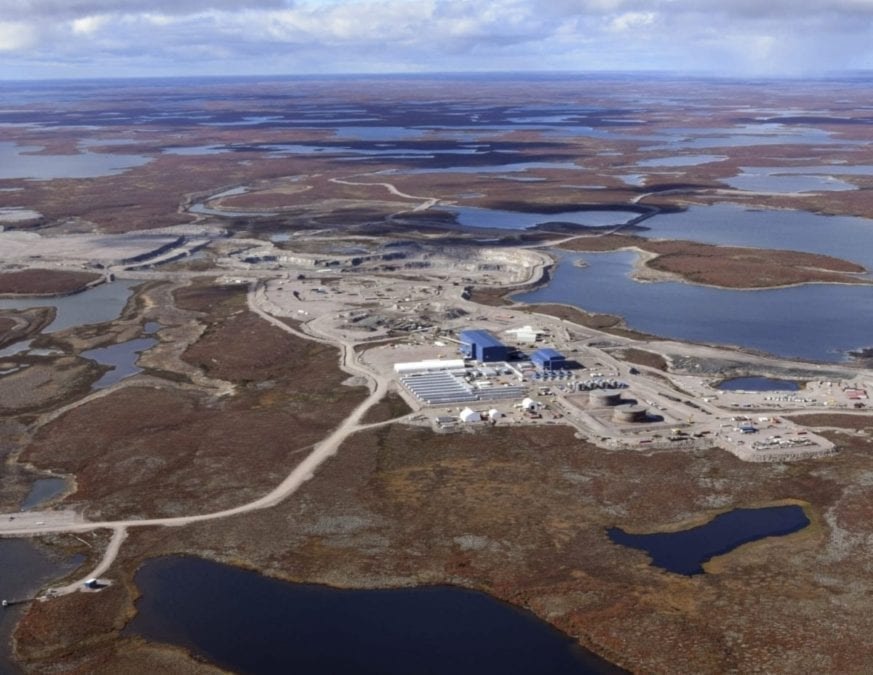
photo courtesy DeBeers Canada
The diamonds of the future could be carbon neutral.
That's the hope behind a large chunk of the $3.8 million MP Michael McLeod announced for clean energy projects in Yellowknife on Tuesday, $2 million of which will fund further study of process called carbon mineralization, which could sequester large amounts of carbon dioxide in mine tailings.

Nick Pearce/NNSL photo
Project lead and University of British Columbia professor Greg Dipple said the funds will allow the technology to transition from the lab to the field.
Field trials will start at the Gahcho Kue diamond mine within the next two weeks. The process leaves carbon dioxide in a "solid, mineral form, where it can remain in a benign state for thousands of millions of years," said Dipple.
These trials would be some of the first field applications of the technology.
"You would be burying all this sequestered carbon in the tailing storage facility as the mine is remediated," he said. "It would be basically captured within the landscape."
Though Gahcho Kue will end its projected lifespan in 2028 at the earliest, lessons from the project could be used to design future mines, said Dipple.
"More than 90 per cent of carbon on earth is bound in rocks because that’s where it wants to be and this is just putting the carbon back in rocks," he said.
'We want to make this a model for other communities'
McLeod awarded Denesoline Corporation $400,000 to complete a study on hybrid renewable energy for the Lutsel K'e Dene First Nation.
The study links to an ambitious plan to produce a megawatt of energy via a smart grid of wind, solar and hydroelectric power for the community.
Haroon Bhatti, innovations manager at the Denesoline Corporation, said it would allow Lutsel K'e to “bypass the dependency on fossil fuels” faced by many cities that are in the process of transitioning to green energy.
"It's not a matter of if. It's a matter of when and where, because we know that technology is suited for Lutsel K'e," said Bhatti.
However, the project is still in its early stages. Before the grid is ready in late 2022 or 2023, surveyors will determine if the ground near the community is stable enough for wind turbines, which areas are well-exposed to the sun for solar panels and where water runs fastest for hydroelectric production.
The key to the smart grid is a computer program developed by the British Columbia Institute of Technology that "learns over time," said Bhatti.
To manage the community’s energy needs, the program collects data on wind, water and sunlight.
After recognizing patterns in energy consumption and production, it can choose power sources depending on the community’s needs and the capacity of the system.
While it already has a solar farm, hydroelectric generation and wind power have not seen the same degree of testing in the region, he said.
“It all comes with trying to progress and adapting as we go along, seeing what works and doesn’t work," said Bhatti. "It's not to say we’re just shooting arrows blindly. We already know the technology works, but it hasn’t really been done in this way.”
“We want to make this a model for other communities,” he continued.
Support for biomass boilers, energy literacy among Indigenous women and youth
Additionally, $640,000 in federal funds will go to the installation of a biomass heating system in Aklavik, with another $200,000 going toward energy efficiency upgrades.
The Centre for Indigenous Environmental Resources will also receives $380,000 for energy literacy among Indigenous women and youth.
The Rat River Development Corporation will receive $229,000 to support a study assessing the feasibility of adding a biomass boiler to the community’s heating system.
